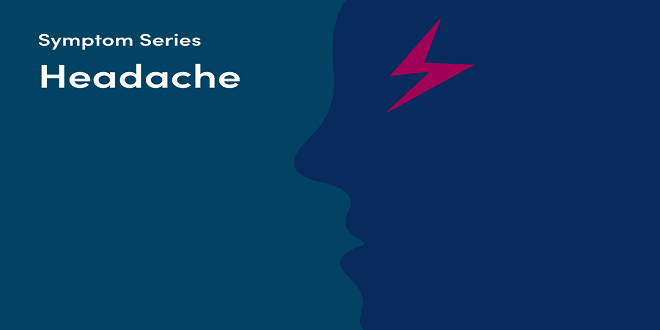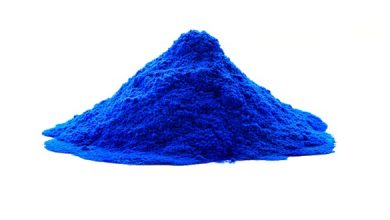HEADACHE IN COVID-19 INSECTION

Introduction
Headache refers to pain in the head. Headaches can occur on either one or both sides. They may be localized to a specific location or radiate from one point across the head.
Headache disorders are one of the most common disorders in the nervous system.
Globally, the prevalence of headache disorder in adults (symptomatic at most once in the past year) has been around 50%. About half to three-quarters of all adults between 18 and 65 years old have experienced a headache within the past year.
The prevalence of headaches is under-recognized and poorly treated around the globe.
COVID-19 can cause a severe respiratory condition that can damage your lungs. It is caused by the novel coronavirus, also known as SARS-CoV-2 in clinical terms. On December 1, 2019, Wuhan was the first to be reported. There are currently at least 1.8 million people infected worldwide and nearly 110,000 have died.
There are several symptoms of COVID-19. A headache is one of the symptoms. Other symptoms include loss in taste and smell.
Duration for headaches in covid-19
Your first sign of covid-19 will be a headache. It will disappear quickly. It usually persists for 3-5 days.
What is the most common headache in COVID-19.
Patients with covid-19 experience headaches quite often. Different researches have been done on covid-19 headache persistence.
The study “Headaches during COVID-19” was done with over 41000 patients. It found that headaches were present in 8 to 12% of patients (Belvis and Pain 2020).
Headache in Covid-19
Even without covid-19, headaches are very common around the world. It is not known what causes headaches in covid-19. However, different researchers and health professionals have different theories about how covid-19 causes headaches.
It could be caused by cytokines, lung infection or runny nose, according to the researchers. Some coronaviruses have been shown to be neurotropic, and an ex-SARS-CoV was found in the human brain [19-20]. It is possible that SARS-CoV-2 could also enter the nervous systems via the cranial nerves.
Anosmia, a loss of sense of smell, causes headaches that are more intense. The International Classification of Headache Disorders-3 describes headaches related to a systemic viral infections (without signs of meningoencephalitis).
How can you tell if your headaches are caused by COVID-19?
Headaches are a common condition. You may wonder how to tell if your headaches are due to COVID-19.
The exact characteristics of a COVID-19 migraine are not yet known. It can be difficult to distinguish a COVID-19 headache from other types of headaches.
Reports Trusted Source identifies the following symptoms of a COVID-19 headache
Moderate to severe intensity
Causes a pulsing sensation or pressing sensation
It can occur on either side of your head (bilateral).
It could get worse if you bend over
What kind of headaches does covid-19 suffer feel?
Most headaches last for only 3-5 days. However, some patients experience headaches that persist for longer periods of time even after they have recovered from covid-19. Some patients experience severe headaches that last for a few days, while others may have it for several months.
Covid-19 headaches are mostly full-head pressure-like. They may also experience migraines, but the majority of headaches are full-head pain.
Other symptoms of Covid-19 infection include
The symptoms of covid-19 can vary from one patient to another. Researchers are still learning a lot about the virus, which is a relatively new virus.
It can also show signs of damage to the lungs. The patient may feel shortness or no breath. After a few days, this symptom will appear.
These include:
Fièvre
Fatigue
Cough
Breathing difficulty
Sore throat
Body aches and pains
Runny nose or stuffy nose
digestive symptoms, like nausea, vomiting, or diarrhea
Loss of taste or loss of smell
You should contact your doctor immediately if you experience any serious symptoms.
What do I do if I feel like I might have COVID-19-related headaches?
A COVID-19 diagnosis could explain your headaches, particularly if you feel tired and have lost your senses.
If you suspect that you are covid-19, then immediately isolate yourself at home or elsewhere to protect others.
Take complete relaxation in a darkened room, without any noise.
Do not panic if you feel a headache. This is common with covid-19 infection.
Do not watch T.V., Mobile, LED, etc. for longer periods of time.
Fresh fruits and vegetables are good choices, as well as other healthy products, especially those that contain vitamin c.
Contact your doctor if you experience severe pain in the head or any neurological condition like dizziness, numbness, visual disorder, or numbness.
Strategies for treatment
Take OTC (over-the-counter) medication
OTC pain medications such as paracetamol (Panadol), acetaminophen/Tylenol, aspirin or ibuprofen/Advil may be helpful in relieving pain and reducing fever.
Use a cool compression
A cool compress placed on the forehead can help relieve headaches. If you have a fever, it can help you stay cool.
Give your body a gentle masseuse
You can ease headache symptoms by gently massaging your temples or forehead during a headache.
When should you seek medical attention?
COVID-19 is a mild disease. However, it can sometimes progress to more serious conditions in some individuals. This usually occurs between 5 and 8 days Trusted source after symptoms appear.
There are many warning signs that indicate severe COVID-19 disease. You should seek immediate medical attention if you have any of these symptoms.
Trouble breathing
Pain or pressure in the chest
Blue-colored lips, nails, and face
There is confusion
Trouble staying awake, or difficulty getting up





